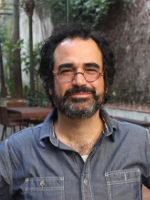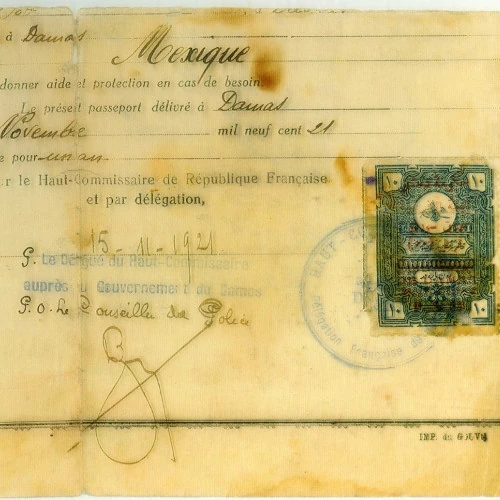Reimagining the Sagrada Familia: Family and Faith in the life of Luis de Carvajal, el Mozo (Mexico 1590s) (pp. 33-47; DOI: 10.23692/iMex.14.3)
 Loading...
Loading...Dr. Ronnie Perelis
 Ronnie Perelis is the Chief Rabbi Dr. Isaac Abraham and Jelena (Rachel) Alcalay Associate Professor of Sephardic Studies at the Bernard Revel Graduate School of Jewish Studies of Yeshiva University. His research investigates the nexus between Iberian and Jewish culture during the medieval and early modern periods. His essays on Sephardic history analyze the dynamics of religious transformation within the context of the crypto-Jewish experience. His new book, Narratives from the Sephardic Atlantic: Blood and Faith (Indiana University Press) explores family and identity in the Sephardic Atlantic world. He is currently working on a project about Inquisitorial prisons as sites of cross-cultural encounter.
Ronnie Perelis is the Chief Rabbi Dr. Isaac Abraham and Jelena (Rachel) Alcalay Associate Professor of Sephardic Studies at the Bernard Revel Graduate School of Jewish Studies of Yeshiva University. His research investigates the nexus between Iberian and Jewish culture during the medieval and early modern periods. His essays on Sephardic history analyze the dynamics of religious transformation within the context of the crypto-Jewish experience. His new book, Narratives from the Sephardic Atlantic: Blood and Faith (Indiana University Press) explores family and identity in the Sephardic Atlantic world. He is currently working on a project about Inquisitorial prisons as sites of cross-cultural encounter.
Luis de Carvajal, el Mozo, was part of a large Converso family that moved from Spain to New Spain (Colonial Mexico) in 1580. While some members of his family, like his brother Gaspar, a Dominican friar, and his uncle, Luis de Carvajal, el Viejo, a regional governor, were devout Catholics, Luis and most of his immediate family were passionately devoted to crypto-Judaism. Luis crafts a powerful narrative of religious sacrifice and creativity in his spiritual autobiography (1589-95). His family members play a central role in this religious drama. As Luis is writing his autobiography the Church is reinvigorating the centrality and religious vitality of marriage and family life. Joseph, the husband of Mary, undergoes an image transformation turning the often sidelined, frail yet pious companion of Mary, into a vigorous, handsome man who provides for and protects his wife and child. This reinvigoration of the image of Joseph is part of a larger post-Tridentine push to emphasize the importance of the sacrament of marriage and the sacred nature of family life. In this essay, I explore the matrix of ideas and images operating within the post-Tridentine Iberian religious imaginary, both in its hegemonic Catholic and its subversive crypto-Jewish iterations.
Luis de Carvajal, el Mozo, era parte de una gran familia de conversos que se mudó de España a Nueva España (México colonial) en 1580. Mientras que algunos miembros de su familia, como su hermano Gaspar, un fraile dominicano, y su tío, Luis de Carvajal, el Viejo, un gobernador regional, eran devotos católicos, Luis y la mayoría de su familia inmediata estaban apasionadamente dedicados al cripto-judaísmo. Luis crea una poderosa narrativa de sacrificio religioso y creatividad en su autobiografía espiritual (1589-95). Los miembros de su familia desempeñan un papel central en este drama religioso. Mientras Luis escribe su autobiografía, la Iglesia está revitalizando la centralidad y la vitalidad religiosa del matrimonio y la vida familiar. José, el esposo de María, sufre una transformación de imagen que convierte al a menudo deficiente, frágil pero piadoso compañero de María, en un hombre vigoroso y apuesto que cuida y protege a su esposa e hijo. Esta revitalización de la imagen de José es parte de un impulso post-Tridentino más grande para enfatizar la importancia del sacramento del matrimonio y la naturaleza sagrada de la vida familiar. En este ensayo exploro la matriz de ideas e imágenes que operan dentro del imaginario religioso ibérico post-Tridentino, tanto en sus formulaciones católico-hegemónicas como en las subversiones cripto-judías.
Jacobo Sefamí / Matthias Lehmann - Editorial
Procesos inquisitoriales novohispanos. Nuevas aproximaciones
Antonio Cortijo Ocaña - El proceso contra Margarita Moreira
Ronnie Perelis – Reimagining the life of Luis Carvajal
Alicia Gojman - Guillén Lamport en la Nueva España
Experiencias migratorias de los judíos sirios y paralelismos con los libaneses maronitas. Perspectivas históricas
Carlos Martínez Assad - La memoria en la construcción de identidad
Liz Hamui - Narrativas de integración
La avidez de conocimiento universal en la literatura fundacional de tres escritoras judeo-mexicanas
Sara Poot Herrera - Margo Glantz: razón y corazón
Leonardo Senkmann - Figuraciones y fulguraciones en Esther Seligson
Darrell B. Lockhart - Semiotics in Myriam Moscona
Creation
Evocaciones del entorno sefardí
Myriam Moscona - Los guantes negros
Jacobo Sefamí - En Estambol te vo a bushkar
Interview


